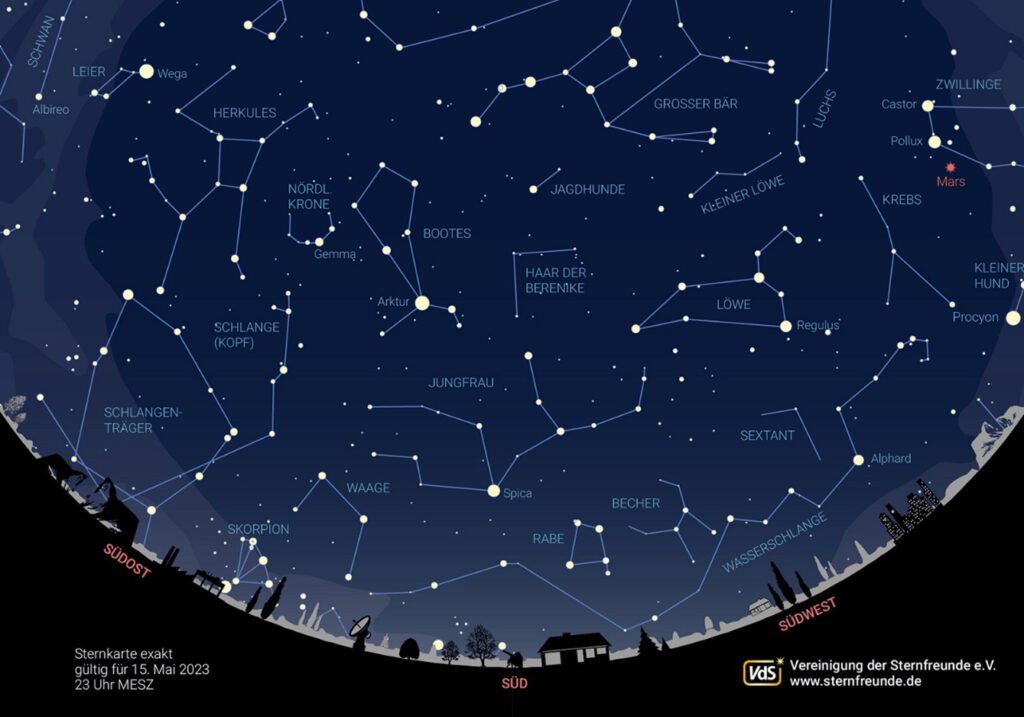The starry sky in May 2023
Due to the increasing length of the day, the useful observation times will be reduced from five hours at the beginning of May to just two hours at the end of the month. This would mean that the start of observations of galaxies and similar faint objects would shift from 23:00 CEST to 0:30 CEST. For this reason the observatory is only open from the beginning of May to the end of August under certain conditions. These include, for example, observing the moon or bright planets. The times will be announced here.
See also the article the types of twilight
We look forward to showing you the full beauty of our night sky again from the beginning of September.
SUN AND MOON
If the sunset for Zweibrücken on May 1 is still at 20:43 CEST, it will shift to 21:03 CEST on May 15 and then to 21:22 CEST on May 31. The full moon on the evening of May 5 unfortunately clouds the view of the sky in the days before and after, and in the early evening of May 23 the moon passes Venus at a distance of three degrees to the north, and one day later it passes Mars at a distance of two degrees. A nice view of the sky can be seen during these days when the waxing moon, Venus and Mars can be observed above the western horizon in the evening.
PLANETS
Mercury is at its greatest western elongation on May 29th, unfortunately, despite the large angular distance to the sun, there is no morning visibility.
Venus remains the star in the evening sky. At the beginning of the month, it only sets after midnight at 0:39 CEST due to daylight saving time.
Mars becomes a planet of the first half of the night. The five arcsecond disk further reduces its brightness from 1.3 mag to 1.6 mag.
Jupiter only slowly appears in the morning sky in the last third of May, while Saturn can further expand its morning visibility.
Discovered by Wilhelm Herschel in 1781, the Uranus is conjunct the Sun on May 9. It remains, together with Neptune, below the horizon at night.
STARRY SKY
On Northern sky the "celestial W", Cassiopeia, approaches the horizon. Alongside the Great Bear and Cepheus, it is one of the so-called circumpolar constellations that never set in our latitudes. High about us the aforementioned Great Bear and the Bear Keeper are still enthroned.
Against West Orion has already completely disappeared. Other spring constellations, such as Gemini and Cancer, gradually approach the horizon over the course of the month.
In the South are the Virgo, the Hair of Berenice, with its multitude of Messier objects and the Bear Keeper with the Northern Crown. Hair of Berenice is the only one of the 88 constellations named after a historical person, the then pharaoh Berenice II.
Direction East the inconspicuous Hercules with its bright globular cluster M13 and Lyra with its striking star Vega have already risen. The constellation Swan is just above the horizon. The eagle cannot yet raise its wings completely above the horizon. Similarly, Scorpius is still struggling with the layers of haze.

